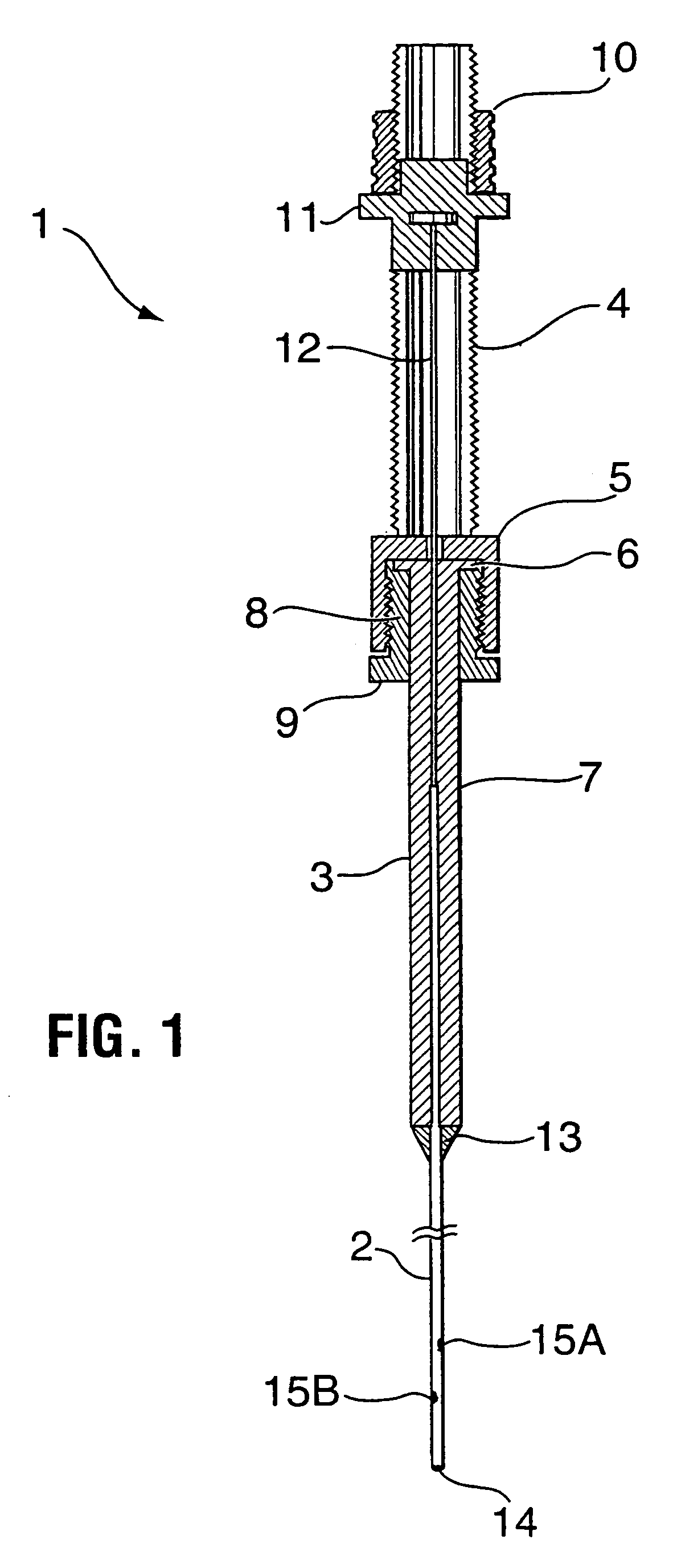Neural transplantation delivery system
a neural transplantation and delivery system technology, applied in the field of neural transplantation in the human brain, can solve the problems of poor graft integration, reduced graft survival, cell death and cell death, and achieve the effect of optimizing the host reinnervation, reducing the number of passes through the brain, and maximizing the number of deposits
- Summary
- Abstract
- Description
- Claims
- Application Information
AI Technical Summary
Benefits of technology
Problems solved by technology
Method used
Image
Examples
example 1
Animal Studies
[0068]Animals tolerated the transplant procedure well and all of them had surviving grafts 6 to 8 weeks after transplantation. Typically, two graft deposits were observed in the implanted striatum and each graft deposit corresponded to the upper and lower side holes of the transplant cannula (FIG. 7). The cannula tract was clearly visible connecting the upper and lower graft and the deposits appear to be oriented in opposite directions. Numerous TH immunoreactive cells and fibres were observed in the graft deposits and cannula tract (FIG. 7). Fibres were also observed penetrating the host striatum for variable distances and overall the appearance of the grafts was comparable to animals grafted with a glass microcapillary in our laboratory (Mendez et al., Brain Res., 778, pp. 194–204, 1997; Mendez et al., J. Neurosci., 16(22), pp. 7216–7227, 1996). There was no evidence of significant trauma in the grafted area and no tissue disruption was observed in the cannula tract....
example 2
Clinical Studies
[0069]Eight patients enrolled in the Halifax Neural Transplantation Program received bilateral putaminal fetal VM tissue obtained from women undergoing elective abortions in the pregnancy termination unit of the Queen Elizabeth II Health Sciences Centre following strict guidelines of a protocol approved by the University and Hospital ethical review boards.
[0070]The surgical transplantation procedure was carried out in two stages in which each side was transplanted 4 to 6 weeks apart. Patients were admitted to hospital the night prior to surgery. On the day of surgery, patients were fitted with a Leksell stereotactic headframe under local anaesthesia. The stereotactic coordinates for targets in the putamen were calculated using T1-weighted MRI images and a computerized planning workstation (Surgiplan, Elekta AB, Stockholm, Sweden).
[0071]Transplantation was performed with the patient under local anaesthesia and sedation, using a combination of Midazolam (0.25 to 1.0 mg...
PUM
 Login to View More
Login to View More Abstract
Description
Claims
Application Information
 Login to View More
Login to View More - R&D
- Intellectual Property
- Life Sciences
- Materials
- Tech Scout
- Unparalleled Data Quality
- Higher Quality Content
- 60% Fewer Hallucinations
Browse by: Latest US Patents, China's latest patents, Technical Efficacy Thesaurus, Application Domain, Technology Topic, Popular Technical Reports.
© 2025 PatSnap. All rights reserved.Legal|Privacy policy|Modern Slavery Act Transparency Statement|Sitemap|About US| Contact US: help@patsnap.com



